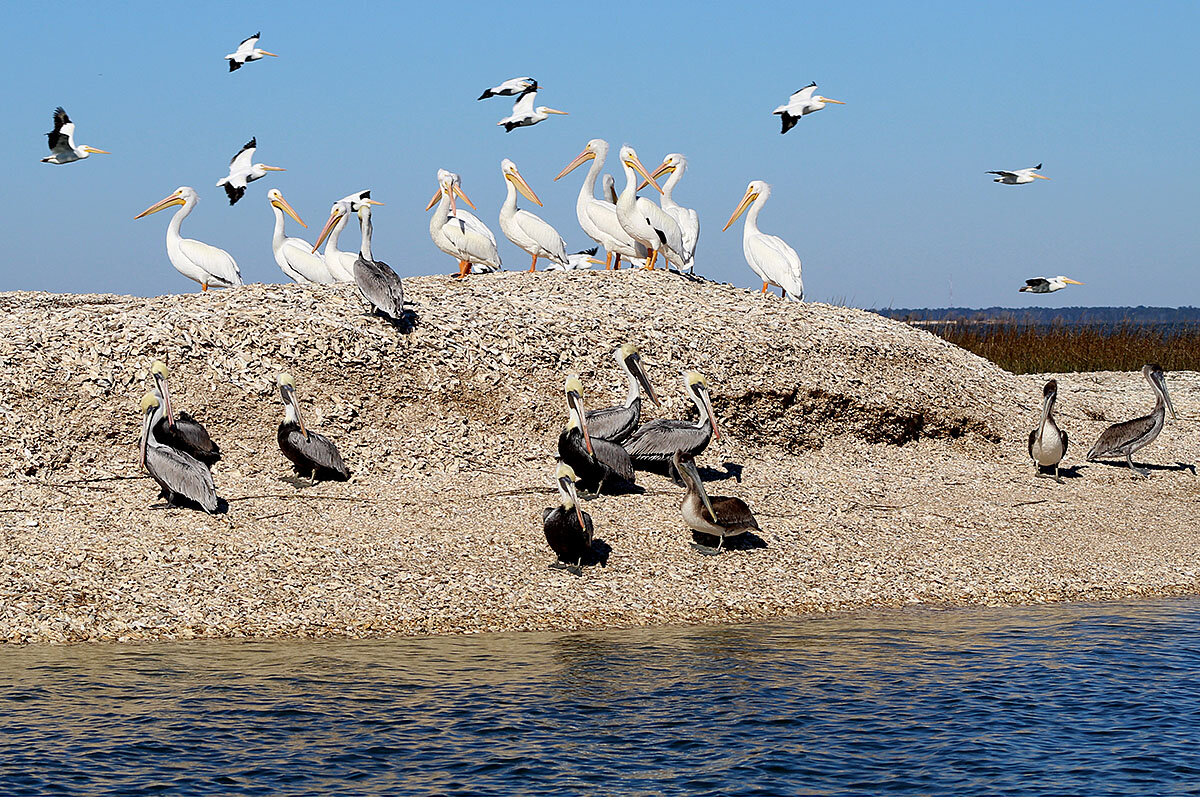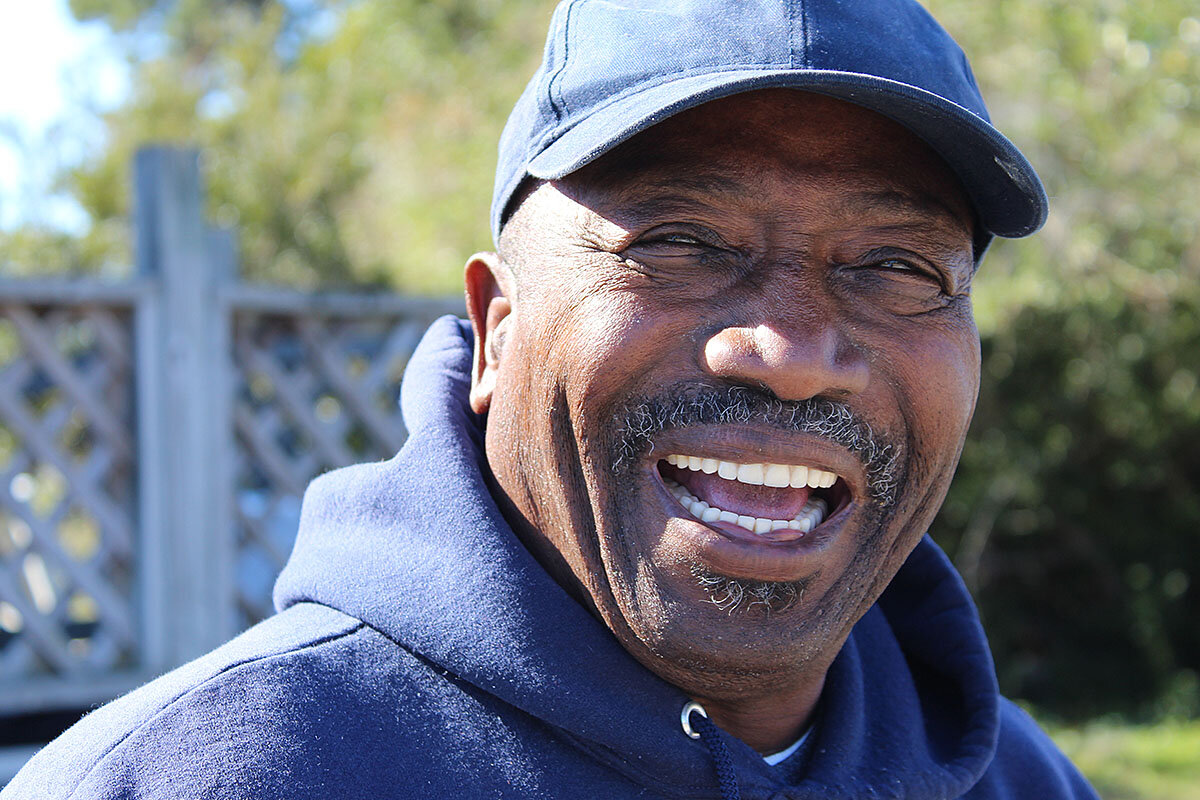Paradise lost? Developer sizes up S.C. island for ecotourism
Loading...
| BAY POINT ISLAND, S.C.
A single weatherbeaten cabin stands on Bay Point Island, a tiny barrier against the encroaching Atlantic Ocean. For developer Tim Pitcher, who co-owns the island, it’s a missed opportunity. He wants to build an ecotourism resort that would showcase the region’s natural beauty and African American culture, providing a unique experience that brings in income to help preserve Bay Point.
Developers in South Carolina have long had their way in building properties along the coast, even as the costs of flood defenses rise. Beaufort County, where Bay Point lies, is resisting this project, though. Zoning officials initially rejected Mr. Pitcher’s proposal in December, brushing aside his argument that the project is low-impact ecotourism. Environmentalists welcomed that decision, which will now be heard by an elected zoning board.
Why We Wrote This
Ecotourism is good in theory, but in practice it often runs into differing views of how man and nature should coexist. South Carolina’s at-risk barrier islands add a cultural wrinkle: a unique African American community that calls this coastline home.
Along the Atlantic Seaboard, states are weighing the risks of climate change amid rising sea levels and more extreme weather events. Many are asking whether it makes sense to build, or rebuild, on the edge of a continent, and that includes vulnerable barrier islands like Bay Point.
For Mr. Pitcher, the bigger question is what is the relationship between humans and their environment. He believes that to truly preserve the wilderness, people have to learn “how to interact with nature in a positive and mindful way.”
As Tim Pitcher looks out across Port Royal Sound to where it meets the Atlantic, he has a pioneering vision for one of the last redoubts of wilderness along the U.S. Atlantic coast.
One of the last undeveloped private spits on a harsh but beautiful coast, Bay Point Island, has long been on the radar of mansion builders.
Instead, Mr. Pitcher, a developer and self-described environmentalist, is partnering with a Thailand-based resort management company to create a first for the United States: an ecotourism resort that showcases both the region’s natural treasures and the African American culture of the Gullah people.
Why We Wrote This
Ecotourism is good in theory, but in practice it often runs into differing views of how man and nature should coexist. South Carolina’s at-risk barrier islands add a cultural wrinkle: a unique African American community that calls this coastline home.
To Mr. Pitcher, at least, the proposed Six Senses resort seems a slam-dunk, offering travelers a comfortable adventure, all with an eye toward proper stewardship. But his plans have run into resistance from environmentalists and the Gullah community.
The concern is that developers “are going to destroy what they came here to see,” says Ed Atkins, a Gullah oysterman.
The rift over Bay Point Island, highlights a fundamental clash of perspectives, one that divides American wilderness lovers from Appalachia to the Rockies, the Great Lakes to the Rio Grande. It underscores tensions between a desire to embrace wilderness in its natural state and an equally strong drive to manage, market, and develop nature.
“There are two philosophies of environmentalism,” says Mr. Pitcher. “One is that no human shall touch it and therefore we preserve it. The other is that humans are part of the equation.”
He favors the second view: To truly preserve the wilderness, people have to learn “how to interact with nature in a positive and mindful way.” In that sense, Bay Point could prove to be something of a laboratory – and a profitable one for him as a co-owner of a remote island.
“Sacrificial in nature”
Bay Point Island is a geologic infant, its shell-specked sands willed into place between 4,000 and 5,000 years ago by storms and currents.
Today, bottlenose dolphins drive mullets up on its creek banks. Over 100 sea turtle nests dot its dunes from late spring to early fall. Endangered birds like the piping plover and wood stork peck the soft mud for worms and crabs.
As a barrier island, it is also “sacrificial in nature,” says Rikki Parker of the South Carolina Coastal Conservation League – a fortress against nature’s growing wrath in the form of higher tides and punishing storms.
So when Mr. Pitcher and his partners pitched their project to county planners, they stressed its ecotourism design. In December, zoning officials in Beaufort County rejected that designation, noting the construction that the resort would require. The developers are appealing the ruling.
Since the Coastal Zone Management Act of 1972, the United States has attempted to control development along the coasts that serve as the continent’s first line of defense. But attempts to limit private use took a blow from the U.S. Supreme Court in 1992, when the high court ruled that a law prohibiting landowners from building on their property amounts to taking their land.
Even before the 1972 federal Act, neighboring Georgia has led the way in coastal protections, limiting development and retaining nearly 100 miles of barrier islands in their natural state. In South Carolina, however, developers continue to build along the coastline to meet demand that so far seems impervious to rising tides and flooding. As a result, attempts to safeguard its privately held islands from development have largely failed.
Still, there is also a nascent conservation movement afoot in Beaufort County. The state recently purchased TV magnate Ted Turner’s retreat on St. Phillips Island, where local firms “leave only footprints” excursions via kayak. Mr. Pitcher says he aims to incorporate similar ideals into his resort on Bay Point Island – at a higher price point.
A luxury experience
For $1,000 a night, well-heeled tourists from all over the globe would arrive by boat at a dock deep in a spartina salt marsh.
Amid a large stand of pines, they would walk into a village and find 50 luxury huts on pilings. A special septic system would protect the marshes from waste. Guests would dine on local cuisine, and a percentage of profits would go to local community groups.
The plan carves out bird and turtle protection zones. Already, Mr. Pitcher hires people to care for the 347-acre island, which includes picking up natural scraps gathered from the tides as well as trash left by local day-trippers.
In his view, the greatest threat to the island is lack of management.
That idea doesn’t sit well with Queen Quet, the titular head of the Gullah/Geechee Nation who strongly opposes the plan. In her view, the idea that a global resort firm – Six Senses, the Thai company, is a subsidiary of U.K.-based Intercontinental Hotels Group – could manage coastal nature better than locals is “deeply offensive,” she has said.
The Gullah people are descendants of enslaved Africans who retain a unique brogue that echoes from the 17th century. Today they live along the coastal islands and low country in four southeastern states. In North and South Carolina they go by Gullah; the preferred name in Georgia and Florida is Geechee.
“Gullah/Geechee people use the land and the sea in order to subsist, often on the margins of state service,” says Paige West, an anthropologist at Columbia University who studies the relationships between societies and their environments. “This place has been made and remade over time by marginalized people.”
South Carolina’s coast is littered with failed property developments. Down the coast, on Daufuskie Island, Gullah residents watched as two massive golf resorts financed by global investors went bankrupt a decade ago.
The edge of a continent
As Michael Mogil guides his boat through a crabby chop, he points out roosts of white pelicans on an oyster rake. Over there, he indicates, is Parris Island, a Marine training ground where rapid gunfire can be heard above the swaying palms.
At Bay Point, a “no trespassing” sign is fixed above the tide line. There is a single cabin on the island, leaning precariously on eroded soil. One side faces the salt marshes, the other the ocean. Remote and windblown, it feels like standing on the edge of a continent.
“The federal definition of wilderness is ‘unreachable by road,’” says Mr. Mogil, a real estate lawyer and conservationist, as he steps onto Bay Point. “How can we teach environmental values without wilderness?”
That question is being hashed out by county officials. The battle partly turns on definitions: Is the Bay Point project an ecotourism camp with resort amenities? Or is it a luxury resort with an ecotourism component?
“We are contending that this isn’t actually ecotourism, because the true purpose is a resort with some ecotourism-type services – a spa,” says Jessie White, a staff attorney at the South Carolina Environmental Law Project, in Beaufort. Her organization opposes the project, arguing that it would be a better fit for Daufuskie Island.
In December, Beaufort County rejected the resort proposal. Mr. Pitcher calls that ruling a “misunderstanding,” since local ordinances are both keen to promote ecotourism and allow resorts. Elected county officials are scheduled to take a first pass at the plan this spring.
“As far as ecotourism goes, there are lots of good people out there doing good work in the world in ways that do bring economic stability to rural places,” says Professor West. “But there are an awful lot of people using the term ecotourism as a cover for mass scale tourism that is marketed to the wealthiest people in the world.”










